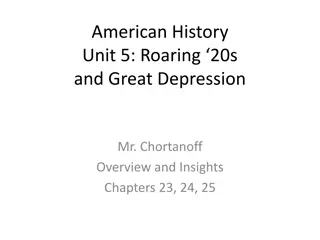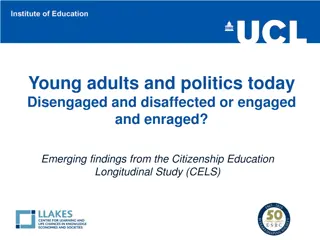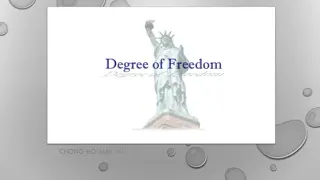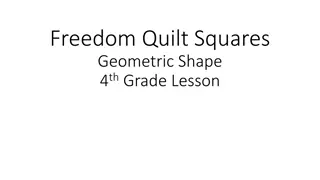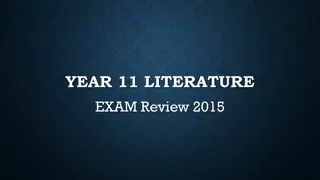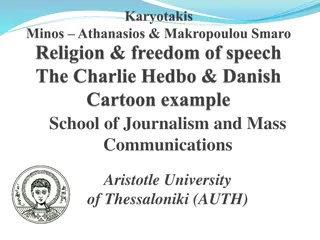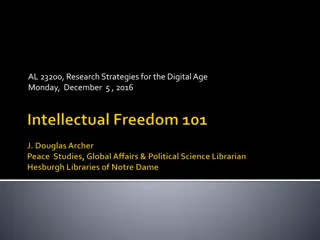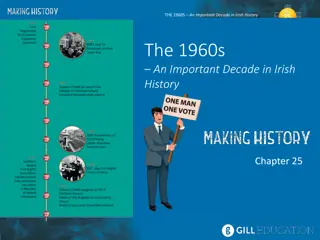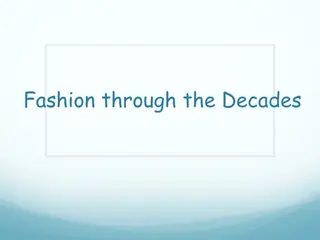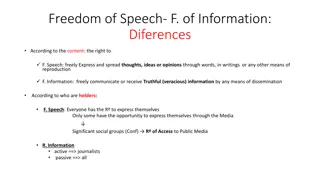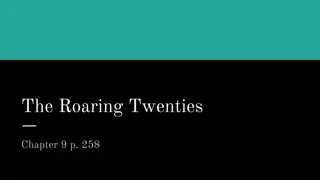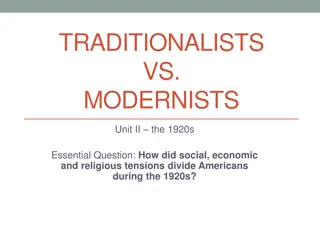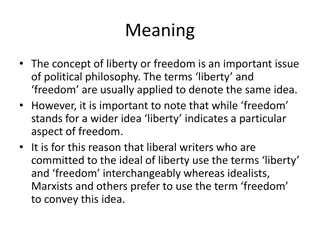The Roaring 20s: A Decade of Change and Freedom
The 1920s, known as the Roaring Twenties, were a time of significant cultural shifts and societal transformations. This era was marked by smart sophistication, independence, casual attitudes towards fashion and behavior, and a desire for liberation from Victorian norms. The period was characterized by a sense of restlessness and a determination to redefine life post-World War I. The decade witnessed a surge in wealth, urbanization, popular culture, and expressions of freedom. However, it was also a time of recklessness, lawlessness, and social upheaval. Women gained newfound freedom and empowerment due to their contributions during the war, reflecting in their evolving style and attitudes. The 1920s left a lasting impact on American society, paving the way for modernization and change.
Download Presentation

Please find below an Image/Link to download the presentation.
The content on the website is provided AS IS for your information and personal use only. It may not be sold, licensed, or shared on other websites without obtaining consent from the author. Download presentation by click this link. If you encounter any issues during the download, it is possible that the publisher has removed the file from their server.
E N D
Presentation Transcript
The Roaring 20s 30 Write down a list of words you associate with the 1920 s (at least 5)
They were smart and sophisticated, with an air of independence about them, and so casual about their looks and clothes and manners as to be almost slapdash. I don't know if I realized as soon as I began seeing them that they represented the wave of the future, but I do know I was drawn to them. I shared their restlessness, understood their determination to free themselves of the Victorian shackles of the pre-World War I era and find out for themselves what life was all about. Colleen Moore
Everywhere was the atmosphere of a long debauch that had to end; the orchestras played too fast, the stakes were too high at the gambling tables, the players were so empty, so tired, secretly hoping to vanish together into sleep and ... maybe wake on a very distant morning and hear nothing, whatever, no shouting or crooning, find all things changed. Malcolm Cowley
The Roaring 20s! After the end of WWI, America s wealth doubled More people lived in cities than in the country There was enough money in the average American s pocket to prompt the popularization of certain brands and trends Household radios became popular and allowed people to know and recognize jazz songs before they got to the dance floor
A Time of Recklessness and Lawlessness There were massive amounts of speculation in the stock market (people bought stocks without the money to back it up) Organized crime was common in cities like New York, as often members of the police force were open to taking bribes from the big bosses of successful gangs In 1919 Prohibition outlawed alcohol and these crime bosses largely controlled the speakeasies that sold it illegally in underground clubs
Women in the 1920s Women had new freedom in the 1920 s due to the fact that many women had taken over jobs usually reserved for men during the war Their success in the workforce gave them a taste of financial independence that, previously, only men had enjoyed The style of young women s dress and hair cuts reflected their bolder attitudes
Change in Womens Style 1920 s 1910 s
Image064.jpg The Popularization of the Automobile Number of cars in America almost tripled from 1920-1929 Car became a symbol of recklessness During the 1920 s alone, 25,000 died, and 600,00 were injured in accidents
The Harlem Renaissance There is an extra credit opportunity tied to this, should you choose to complete it.
The best of humanity's recorded history is a creative balance between horrors endured and victories achieved, and so it was during the Harlem Renaissance.
The Great Migration During WWI, factories had been in great need of laborers, and many black families moved from the Southern countryside to Northern and Eastern cities Allowed black workers better opportunity Made black culture more visible in America
The Harlem Renaissance During the 1920 s, black artists (writers, performers, visual artists) rose to prominence Explosion of black art; artists gravitated to Harlem in NYC American Black culture became more of an organized movement and several prominent leaders debated the best way to show pride in Black American identity McKay, Du Bois, Hughes, Johnson, Hurston, and Toomer (to name a few)
F. Scott Fitzgerald and The Great Gatsby
F. Scott Fitzgerald 1896-1940 Born in St. Paul Minnesota, moved with family to larger cities, then back to St. Paul in 1908 In TGG, the Midwest is referred to as provincial, reassuring, and safe wonder why As an adult, lived just about everywhere: NYC, California, Switzerland, Paris, you name it
The Fitzgerald Family Scott married Zelda and had one daughter, Scottie Zelda had mental health issues, suffered several breakdowns in her life, and died traumatically in a hospital fire in 1948, after Scott s death in 1940
Difficulties Known for being recklessly wasteful: insisted he couldn t live on $36,000 a year ($360,000 today) Was an alcoholic from his 20 s on Landed him in the hospital very often Critics claim this limited the number of works he produced 5 novels 3 novellas 8 short story collections 1 play 1 collection of essays, notebook excerpts, and letters
Praise for The Great Gatsby T.S. Eliot said of the novel, It s the first advance in the novel genre since Henry James. It s a prose poem of images and symbols. Today the novel sells 300,000 copies a year

 undefined
undefined









